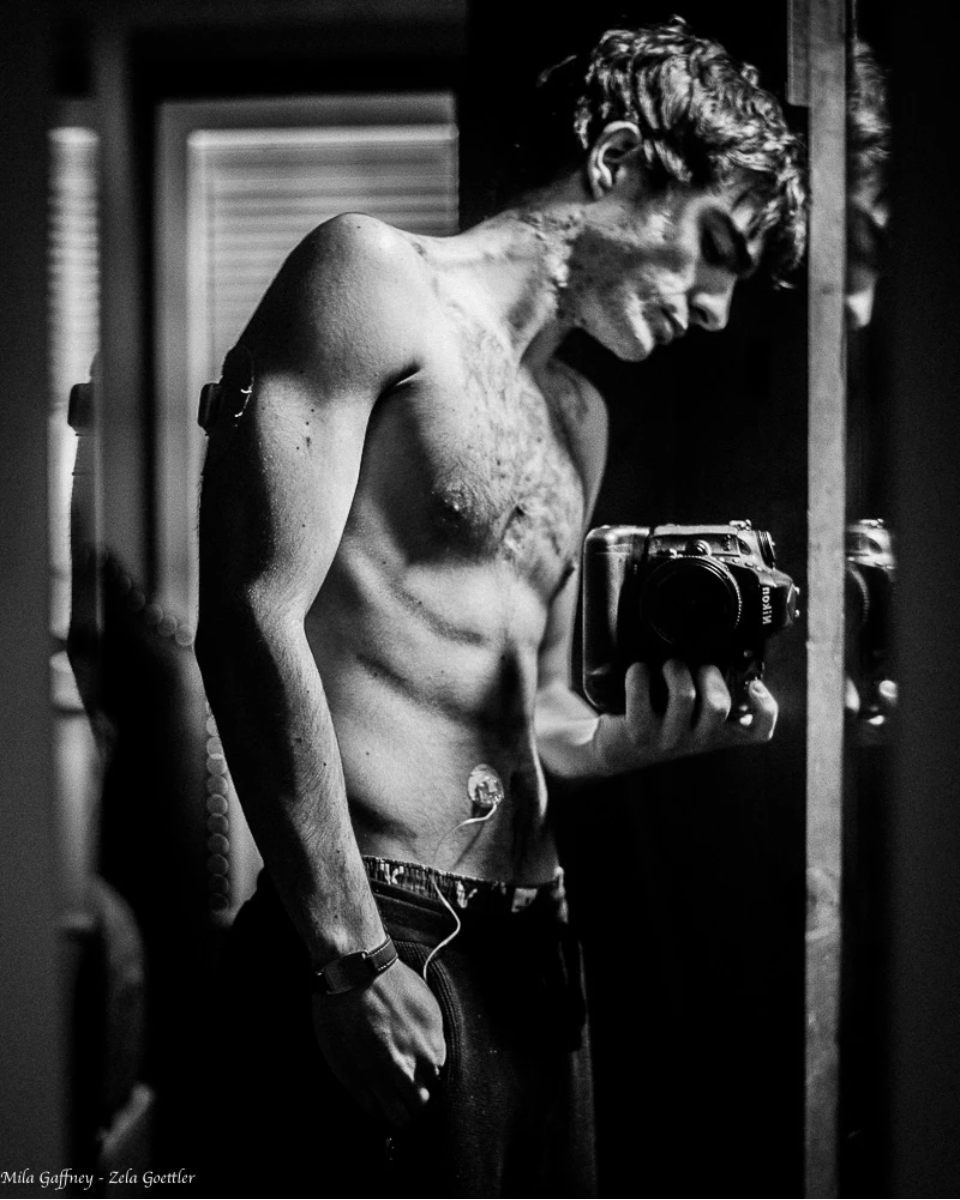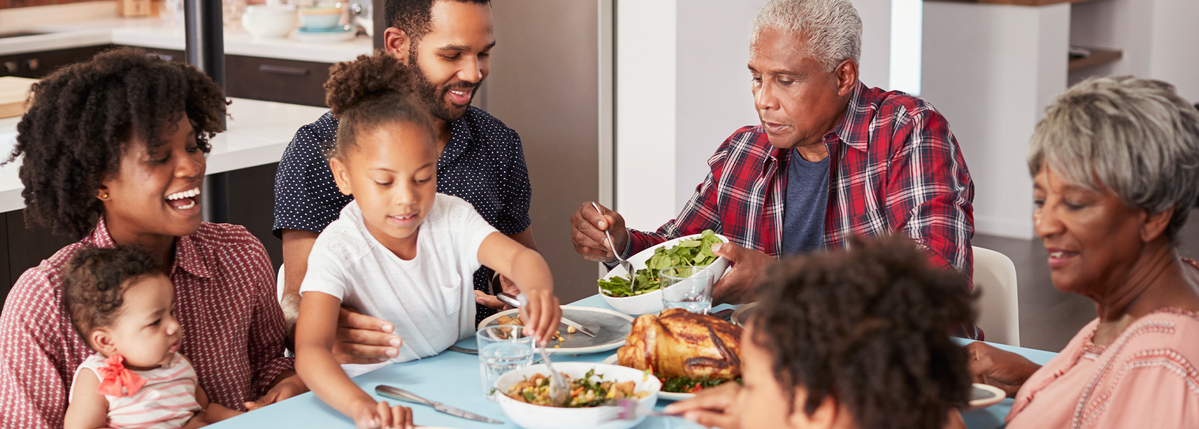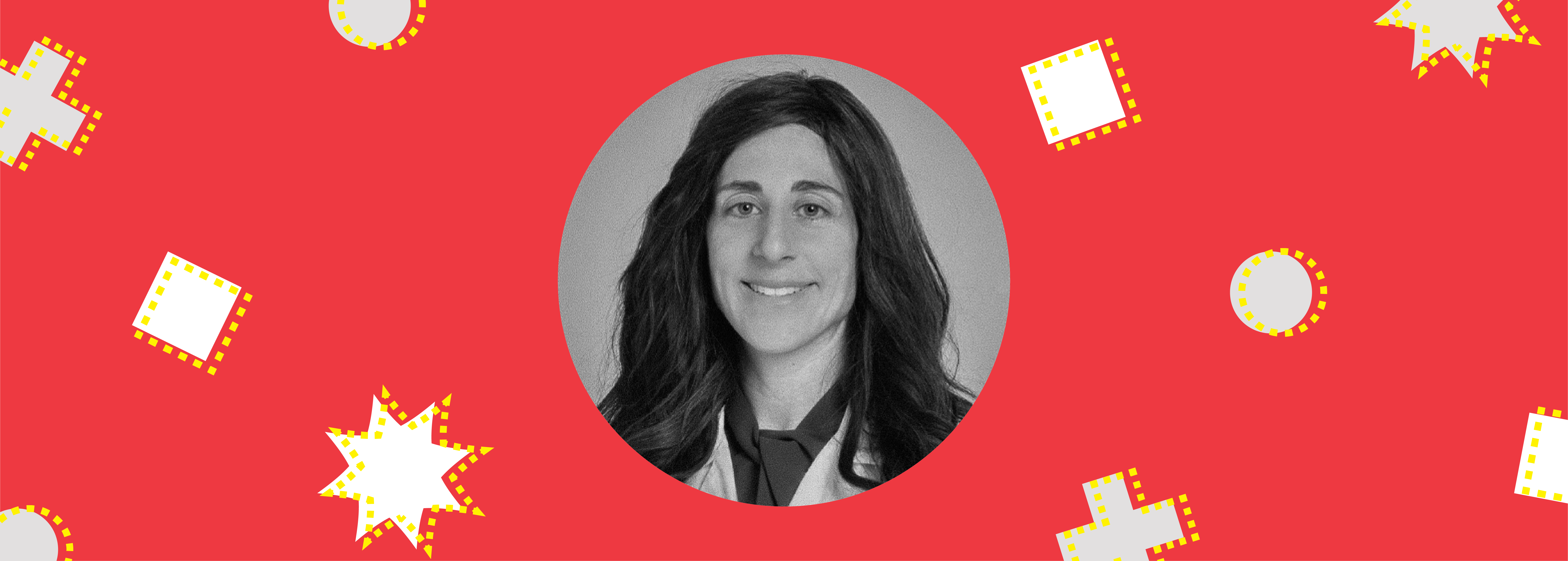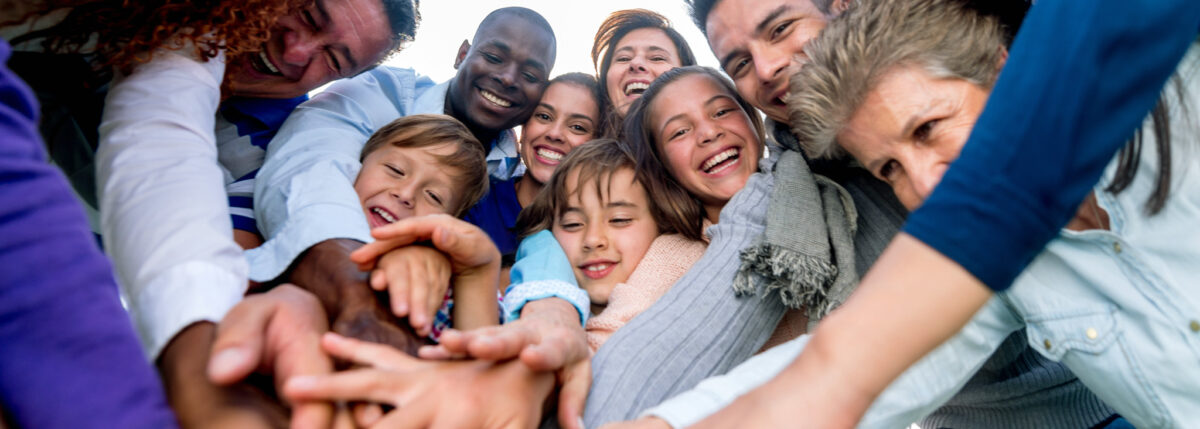American Idol’s Jackson Gillies Talks Life with Two Chronic Conditions
Written by: Beyond Type 1 Editorial Team
8 minute read
April 8, 2019
Jackson Gillies is a musician who has been living with type 1 diabetes since he was 3 years old. He has long been an advocate for type 1 diabetes (T1D), as well as for Hidradenitis Suppurativa (HS)—a skin condition he was diagnosed with as a teen. Jackson’s drive to bring his music and HS awareness to a wider audience led him to audition for the 17th season of “American Idol.” He recently talked to BT1 about his experience and the exposure he hopes to bring to the communities surrounding both conditions.
How long have you had diabetes?
I was diagnosed at 3 years old. The story involves my mom, who taught kindergarten, and my babysitter, Gail. One day, Gail said I was drinking a lot of water and “peeing like a diabetic.” Ironically, they’d just been having a conversation about a young girl we knew who’d been diagnosed with type 1 diabetes and my mom said, “I could never give my child a shot. I don’t know how her mom does it.” Lo and behold, a day or two later my mom sterilized a Tupperware container, had me fill it with my urine, went to the pediatrician’s office and pleaded, “Can you please test this right now?”
We’d been at the doctor’s office the night before when a yeast infection (a byproduct of spilling so much sugar) I was suffering from was misdiagnosed as diaper rash. The lab nurse took the container after telling my mom it wasn’t their protocol to test urine without a lab slip, but she must have seen the knowing in my mother’s eyes. Moments later, as my mom was snapping me into my car seat, she heard, “Connie!” and looked up over the top of our VW bug. The nurse was calling us back already, across the parking lot. Moments later we were on our way to Schneider’s Children’s Hospital in New York. Right from the start my parents told me T1D wouldn’t hold me back. I was testing my own blood under their supervision within a couple of weeks, wearing an insulin pump at age four and tried one of the early continuous glucose monitors (CGMs) at age 9.
How did you become involved with Type 1 advocacy?
 It was almost by accident, funnily enough. Our JDRF NYC Chapter friend was doing a photoshoot in the city for JDRF’s annual financial report cover. I was 5 or 6 at the time. Turns out the boy who was supposed to do the shoot got scared and backed out, so they asked my mom to see if I was interested. Me being me, I said absolutely—any opportunity to talk with free reign. I did that and really hit it off with Mary Tyler Moore’s assistant. She called us again shortly after that and I did some TV public service announcements with Nick Jonas and Crystal Bowersox and Mary Tyler Moore for JDRF, and we just developed a relationship that way.
It was almost by accident, funnily enough. Our JDRF NYC Chapter friend was doing a photoshoot in the city for JDRF’s annual financial report cover. I was 5 or 6 at the time. Turns out the boy who was supposed to do the shoot got scared and backed out, so they asked my mom to see if I was interested. Me being me, I said absolutely—any opportunity to talk with free reign. I did that and really hit it off with Mary Tyler Moore’s assistant. She called us again shortly after that and I did some TV public service announcements with Nick Jonas and Crystal Bowersox and Mary Tyler Moore for JDRF, and we just developed a relationship that way.
One of the coolest projects I did with them was narrating a DVD called “Almost Bionic” with Dr. Aaron Kowalski, PhD, JDRF’s chief mission officer and a T1D himself. The DVD talks about the closed-loop system and a CGM communicating with the insulin pump. At the time this advancement seemed so far off. But fast-forward to 2014, when we moved from NY to Santa Barbara and hooked up with Sansum Diabetes Research Center, collaborators with the same Dr. Kowalski. There I was one of 250 international candidates to test the “artificial pancreas” or closed-loop system for FDA approval. Full circle! Serendipity seems to play a big role in my life and that was one such instance.
I’m thankful to JDRF for their research and advocacy. It’s great that they actually used kids with diabetes in their PSAs. No one would know if they just plucked a couple of cute-looking kids off the street. But it was really cool of them to do that.
Tell us how you came to be diagnosed with Hidradenitis Suppurativa.
At age 14, I got an abscess on my forehead, which grew over two or three months to be about the size of a ping-pong ball. I named it Bob, which I talk about in my TED talk. And that was sort of a testament to my having type 1—I didn’t care about being different. It was almost like a strength for me. I found a way to make it interesting and people would say, “Oh, that’s something new.” I sort of flaunted my giant forehead thing. After that was excised, no one really knew what it was. They said, “Maybe it’s a side-effect of unstable blood sugars,” and my doc encouraged more exercise. NY was cold and at the time, nightfall was at 4:30 in the afternoon. We were considering a move to Florida and it seemed like a good idea to go somewhere tropical, somewhere you can get year-round exercise.
So we moved to Florida, where I got another abscess, this one on my cheek, plus a pilonidal cyst. Then I was hit with between six and eight abscesses on each of my legs. Soon after that we got the diagnosis of Hidradenitis Suppurativa (HS). Turns out a hot climate wasn’t the answer, when dealing with a condition that affects areas where skin contacts skin.
Strangely enough, I’m lucky to have been diagnosed so quickly. The average diagnosis time is up to seven years because it’s so underrepresented and poorly understood. HS has been labeled an “orphan disease.” After much research we found that diet, hormones and stress play a huge role. Testing at UCSF revealed genetics are not a factor for me. I was doing a lot better following a modified paleo diet until I fell off the wagon, got two tennis-ball-size abscesses under each arm (HS presents symmetrically in some sufferers for added fun), and had two incredibly painful surgeries. Since then, my five surgeries in two years have come to an end and I haven’t had a flare in over a month.
Does having HS affect your diabetes management?
Actually, it’s helped. With HS I can only eat really, really clean, healthy foods—pretty much a paleo diet, only what a caveman could eat. I eat grass-fed meat, salad/greens, vegetables and that’s pretty much it. No starches. No grains. No dairy. No sugars of any kind except honey. My numbers flatlined as soon as I really stuck to that diet. And I’ve always struggled with my numbers. Really high A1Cs. But a few months ago my endo said I had a 5.9. I was like, “Is the machine broken?”
Why did you decide to get involved with HS Advocacy?
JDRF advocacy launched me into HS advocacy. When I got the condition I thought, “All right, where are the billboards? Where are the commercials about this thing?” I was used to the amazing support system around type 1. It just seemed natural to talk to people about it.
In Florida, I came back to school after being bedridden for two months with all these leg flares. I was explaining HS to a girl on the bus and she said, “Oh my God. I get the same things under my breasts. I think I have that thing.” I didn’t realize the magnitude of it then, but that was the first time I helped someone figure it out (I hope I’ve helped some others by talking about T1D, too). Ever since that day on the bus I’ve been open about HS from the jump.
Two years ago I was invited to play music at a TEDx event in our town. After speaking to the TEDx organizers, they told me they thought I had a TEDx in me, a story to share. I wrote and memorized an entire 15-1/2-minute TED talk in three weeks. It was an unbelievable process and the reaction has been incredible. It’s gotten over 90,000 views in the past year. On a personal level, it’s been overwhelming to read the responses, especially ones that say something like, “I’ve had this condition for 28 years and never told anybody. You just gave me the courage to tell.” Making a positive impact on someone’s life is one of the best feelings anyone can experience.

How old were you when you started performing live?
After moving to Santa Barbara, I competed in my high school talent show called Royals Got Talent. That was the first time I’d ever played guitar in front of people, and it was in front of my entire school, 1,400 people in my school auditorium. I don’t get nervous much on stage, but that was kind of nerve-wracking. After that was the local Santa Barbara Teen Star competition. That was the second time I ever played guitar on stage and I ended up winning that competition. I met Kenny Loggins through Teen Star. Right off the bat he was mentoring me, saying, “Let’s get together. We’ll write some songs and play some music.” It was just so natural. All these session musicians and these really cool people saying, “Yeah. I’ll help you out,” or, “Come play this gig.” Everyone wants to help. They’re all about music in this town. I’ve shared the stage with Kenny on numerous occasions, and with Michael McDonald, Tariqh Akoni, and many more who are incredibly caring musical mentors to me.
Tell us about your experience on American Idol.
You know, anytime anyone hears you sing, if you’re a good singer, they say, “You should do ‘The Voice.’ You should do ‘American Idol.’” My idols are people who didn’t do talent shows to get famous. They worked on their character and songwriting and becoming incredible musicians. So I always found the idea somewhat disingenuous; I didn’t really see it. And then I looked deeper and thought about how, these days, record deals don’t happen much unless you’re already famous. Artists don’t get developed unless you do it yourself. “American Idol” just seemed like a great way to capture my personality and see if people like me on a national scale.
It’s almost like a test. A personality test. You go out there and be the best you can be and if people like you, they follow you and they’re your fans. It’s as simple as that. When that revelation came to me I decided to do it—I was literally the last audition of the entire season. I met so many talented musicians and am thankful the judges were so authentic.
I had met Katy Perry briefly at the ONE805 KickAshBash benefit concert after the Montecito Mudslide and Thomas Fire. I was performing with a number of artists that day, including Kenny Loggins, David Foster and The Sisterhood Band. It was an incredible benefit and the vibe was pure love. I met Katy and she looked right into my eyes, gave me all of her attention and a hug, that really made an impact on me.
Going into the Idol audition, I had no idea if she would remember me but at one point of the audition she remembered my giving her my card. Unreal. Lionel Richie’s inquisitive and caring nature prompted him to ask me to repeat the name of the condition and when he said “HS,” it sent a wave of hope throughout the HS community. I ended up landing in the top 68 on American Idol, but who would have ever guessed the impact my audition is having on so many people. I’m still getting messages from T1D’s, HS sufferers and people who live with chronic illnesses. It’s incredible.
I am the first performer to bring HS out of the dark. I did an HS awareness concert a few years ago and now this mention on American Idol. Funny thing about the word “hope.” It always takes me back to the JDRF ads: “What does hope look like?” It looks like me and all T1D’s and up to 230 million HS sufferers who day in and day out deal with one of the most painful chronic conditions there is.
What’s next for you?
I’m in the final process of producing another single right now. It’s called “Girl, Oh Goodness Why?” I released my debut single, “Miss Me Too,” in February. After Idol, I came home and began collaborating with Jesse Siebenberg, who had just finished working on some of the tunes from A Star is Born, having co-written with Bradley Cooper and played steel lap in the film. Jesse added some lyrics to “Miss Me Too” and we produced it together. I loved that process, as well as making the shot list and co-directing the “Miss Me Too” music video. “Girl, Oh Goodness Why?” will be out in a couple of weeks and I can’t wait for everyone to hear it. It’s such a thrill to hear my music on the radio in my car.
Where do you see yourself 15 years from now?
I’d love to be a touring and recording musician. I’d like to be a household name for music and for type 1 and HS advocacy, and inspire people to chase their dreams. I see myself speaking to Congress someday on behalf of T1D and HS and connecting with amazing people from all walks of life worldwide, as I enjoy acting too. The sky’s the limit.
What advice would you give to others, especially young people recently diagnosed with a chronic health condition?
No matter how bad the situation is, you’ve got to learn how to bounce back. That might sound a little harsh, but it doesn’t stop at day one. It’s an every single day thing. You’ve got to learn how to wake up in the morning and say, “All right. This is what I’m dealing with. I’m going to make the best of it. I’m still going to enjoy life and do the things I love and not be affected by it. I’m going to make it a strength.” If you can make your weaknesses your strengths and wear them on your sleeve, no one will be able to touch you.

Author
Beyond Type 1 Editorial Team
This piece was authored collaboratively by the Beyond Type 1 Editorial Team. Members of that team include Editorial Manager Todd Boudreaux, Program Manager Mariana Gómez, Director of Brand Communications Dana Howe and Editorial Associate Jordan Dakin.
Related Resources

Editor’s Note: Get involved in Beyond Type 1’s #SeeTheSigns of diabetes campaign! Share your signs to...
Read more

It seems the number of people diagnosed with prediabetes has been progressively increasing. It is...
Read more

Diana Isaacs, PharmD, BCPS, BCACP, BC-ADM, CDCES, is a pharmacist with board certifications in pharmacotherapy,...
Read more

